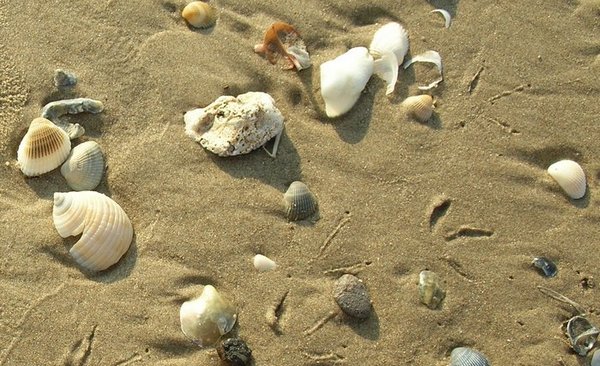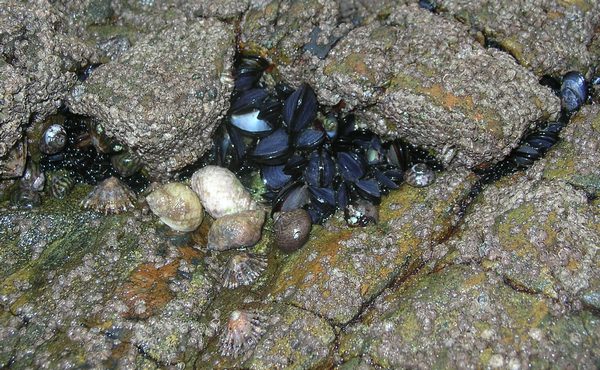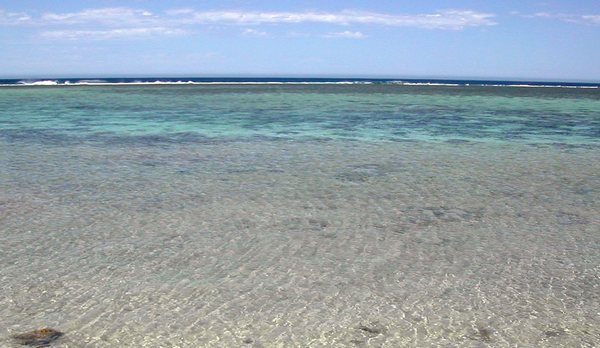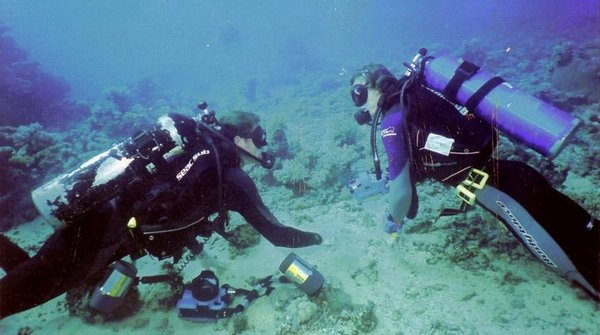
There are many ways to get shells, you can buy them, get new shells through exchanges, having friends collecting for you, ask fishermen for them or go collect by yourself. This last method is the most satisfying to my mind and you are sure to have accurate data (location, condition, etc.) together with the shells. But it involves more work and time than the others.
Anybody can experience this easy way of collecting. Looking down while walking along the shoreline will bring a lot of species.

Some beaches are better than others because of complex oceano-geographic reasons. Even on the same beach some sections will stay free of shells deposits as a bit farther you can stumble on a big pile of them. And in the same way, one day a beach can show lots of shells as a few days earlier there was nothing. My advice is to not surrender a search even if the beach does not look interesting, it can be rewarding to try later when sea conditions would have changed (tides, winds, etc.) or to keep on walking and looking closely for shells patches.
Most of the time, better beaches have a gentle slope down to the sea. In these cases, the waves do not break too heavily on the sand and dead shells can be
pushed up without too much damage to the high tide line. When the sea is backing at low tide, the shells would not been pulled back into the water.
You can also dig for live shells in the sand, look for any tracks of bivalves as most of the time they leave little holes that enable them to filter water.

It is another easy way of collecting and it is especially good for gastropods. Many gastropods live in the tide zone and when the sea retires,
you will find them on the rock waiting for the high tide to come again.
Looking in the pools is also insteresting as you will find them moving and looking for food, together with other marine animals as small fish and crutaceans.
It is not recommanded to take them alive for your collection. Try instead to find fresh dead shells. It is also common to find crabed shells and
if you want to keep its shell, gently remove the hermit crab from its shells and leave it next to empty shells, it will quickly get a new shelter.
Be careful when stepping on rocks at low tide as they can be very slipery. Also avoid being barefoot as some rocks or animals can be very sharp. The best is to wear strong walking shoes.
If you had the chance to have clear and warm waters, it is very nice to go for snorkelling. All you need is a mask, a tube and fins. Looking down from the surface, you can observe interesting mollusks that live under the low tide line, you can also find dead shells that have not been washed on the shore. Even if you do not find any seashells, you would have the chance to watch fishes and other interesting animals in their natural environment. In a lot of place it is not allowed to collect live shells, check the local regulations before collecting any animals.

It is better to be at least with a buddy when snorkelling and you must pay attention to currents as in some places (especially lagoons) tide currents can be very strong and can pull you far even if you are a good swimmer (That is why you must wear fins to help you out when you start drifting in the currents).
It is also possible to find shells in deeper waters during a scuba dive. Just like snorkelling, you might have the possibility to observe live shells, keep in mind that most of them stays buried in sand, hidden in crevices or under rocks.
In most of the cases, scuba hunting is prohibited, it is also the case for live shells. But it is the best way to take nice live shells pictures.
